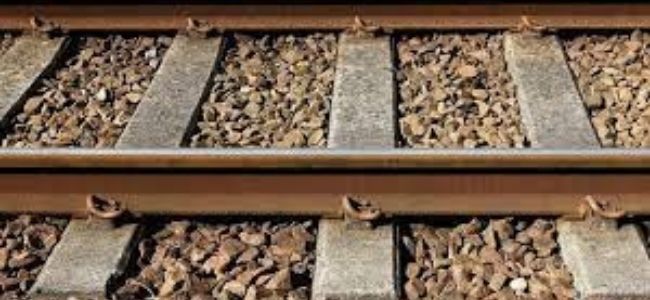Railway Track Ballast: Stones are laid on the railway track, know the science and importance behind it
Track Ballast: Track ballast is the railway tracks on which railway lines run, but do not allow weeds or vegetation to grow as they can weaken the ground.
The weight of a train made of iron is about 1 million kg, which only the track cannot handle. In handling the weight of such a heavy train, tracks made of iron, sleepers made of concrete and stones all contribute. By the way, most of the load is on these stones only. It is because of the stones that the sleepers made of concrete do not move from their place.
Rail travel can be a very enjoyable and wonderful travel experience. However, most of us must have thought at least once in our life that why there are stones on the railway track. If you haven’t found the answer, today we will tell you. These crushed stones are called track ballast and they help to keep the train tracks in place.
When the train moves on the track, vibration is created and due to this the possibility of spreading the tracks increases, to reduce the vibration and to prevent the tracks from spreading, stones are laid on the track.
One of the purposes of laying stones on the tracks is that there is no problem of water logging in the tracks. When the rain water falls on the track, it goes through the stone on the ground, so there is no problem of water logging in between the tracks. Apart from this, the stones laid in the track do not even flow through the water.
What is track ballast?
Track ballast is called crushed stone on railway tracks. They form the track bed and are packed around the railway track. These ballasts form the ground for the sleepers which are used to keep the railway track straight and properly. Railway sleepers are rectangular support pieces that are placed perpendicular to the tracks. A railway sleeper is also called a railroad tie or Christie. These sleepers were earlier made of wood but now they are mainly made of pre-stressed concrete.
Also read
Manoj After seeing Kejriwal ji’s reaction on ‘The Kashmir Files’

Why are only certain types of stones used for the track?
We know what is track ballast, but why only a particular type of stone is used on railway tracks? Let us also try to know the answer to this question.
Track ballast cannot be made of any type of stone. If smooth, round pebbles such as those used on a river bed or a stone used for decoration are used on a railway track, they may roll or slide against each other as a train passes over railway lines. This way the wrong type of stone will not support the railroad tracks which is a main function of track ballast. That is why sharp stones are used on railway tracks for track ballast.
Other functions of track ballast
Techniques used to reduce railway vibration
In addition to providing support for holding railway lines in place and passing heavy trains, there are other functions of stone called track ballast. Track ballasts do not allow weeds or vegetation to grow on railway tracks on which railway lines run because they can weaken the ground.
Track ballast also prevents water from reaching the track regularly and softening the ground. It does not completely shut off the water from the railway tracks, but provides proper drainage facilities under or around the tracks to ensure that water does not remain on it.
Techniques used to reduce railway vibration.

The excessive vibration of the passing train is a danger to the surrounding buildings along with the loud noise. Railway uses a clamping technique to reduce vibration consisting of EPDM or ethylene propylene diene monomer rubber which is highly resistant to heat, water and other mechanical strains. It helps in reducing noise and vibration to a great extent.




